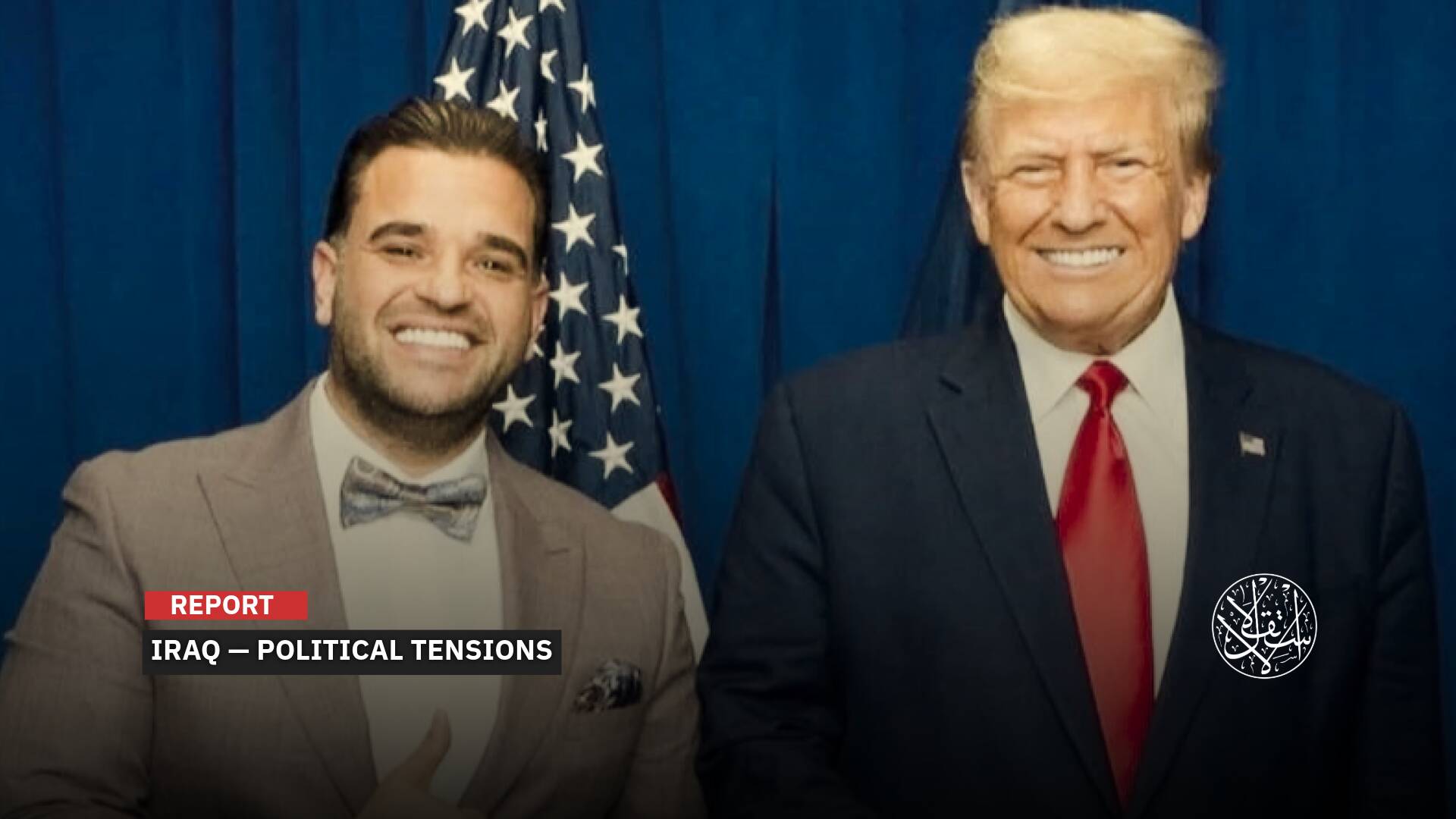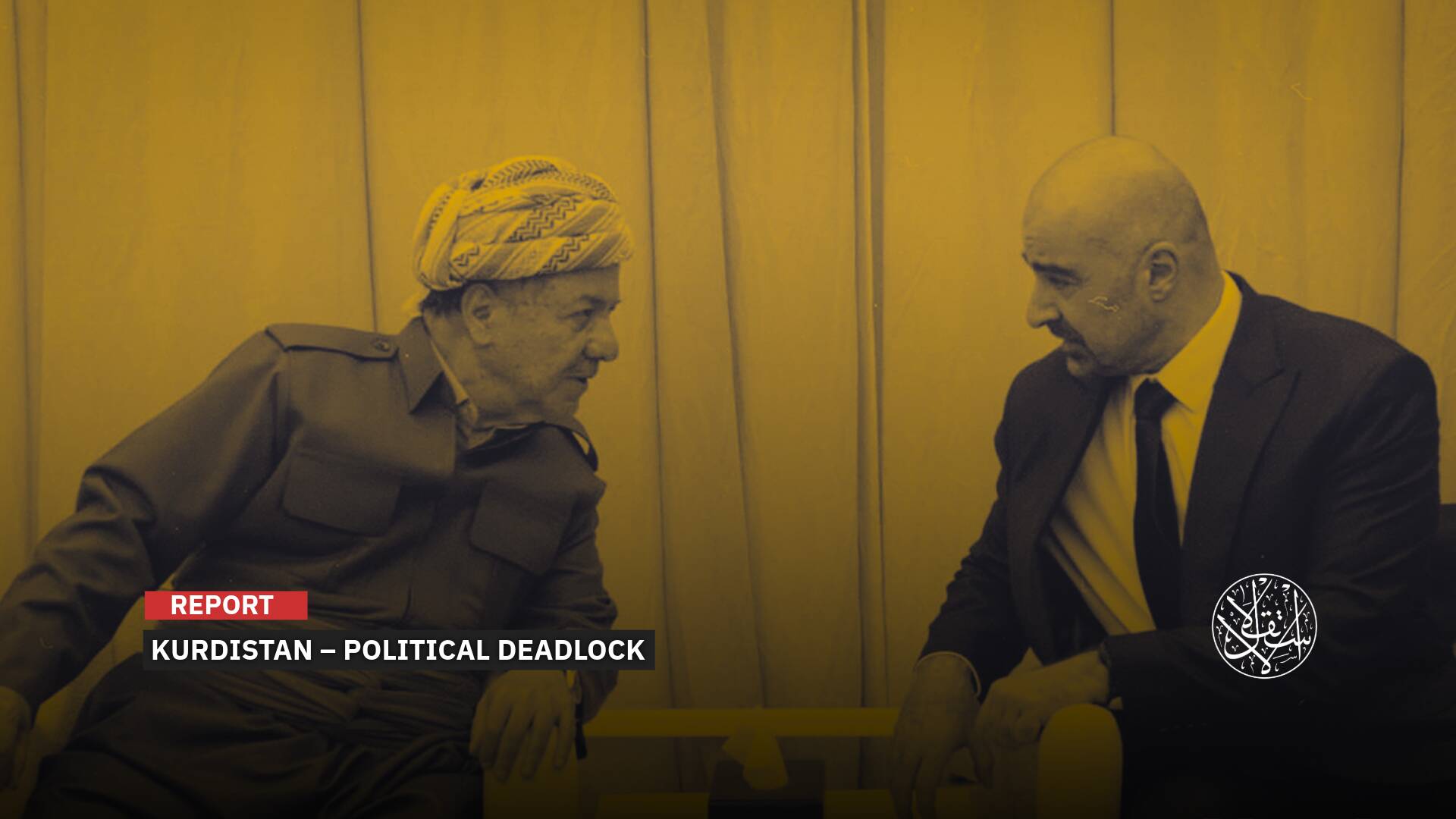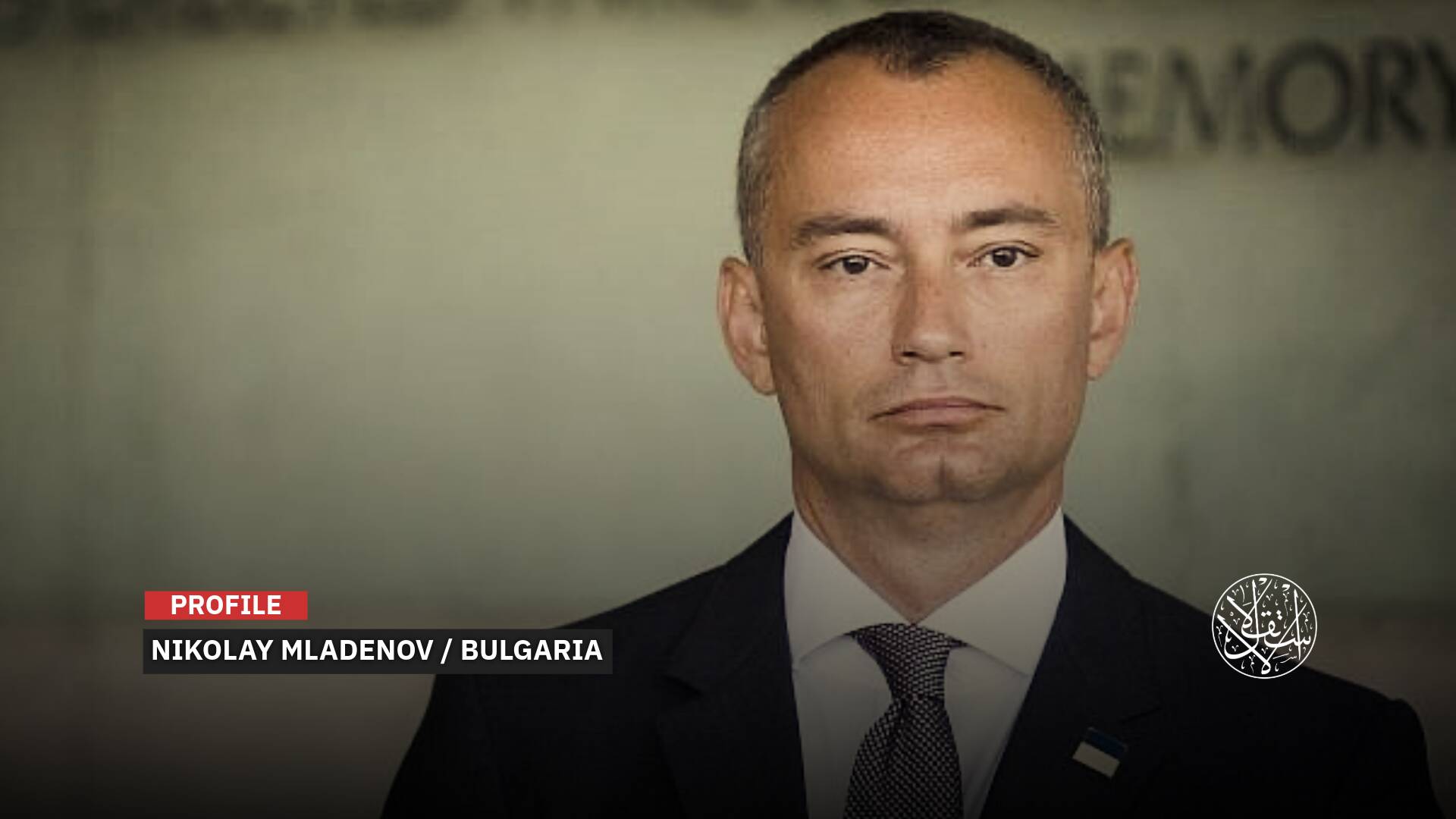'No Kings in America': A Peaceful Protest Movement Relentlessly Challenges Trump’s Ambitions

Protesters in the October demonstrations carried signs with slogans like “Democracy not Monarchy” and “The Constitution is not optional.”
U.S. observers believe the peaceful No Kings movement could soon evolve from a symbolic protest into a lasting national campaign capable of shaking the foundations of the political system.
On October 18, 2025, activists staged what they called the great peaceful uprising, drawing over seven million participants across 2,700 events in all 50 states, according to organizers supported by groups like the ACLU, MoveOn, and Indivisible.
This shift from a one-day demonstration to a rooted nationwide movement has led many to compare it to Occupy Wall Street and the 2017 Women’s March, though broader in scope and grounded in a powerful constitutional message that says there are no kings in America.
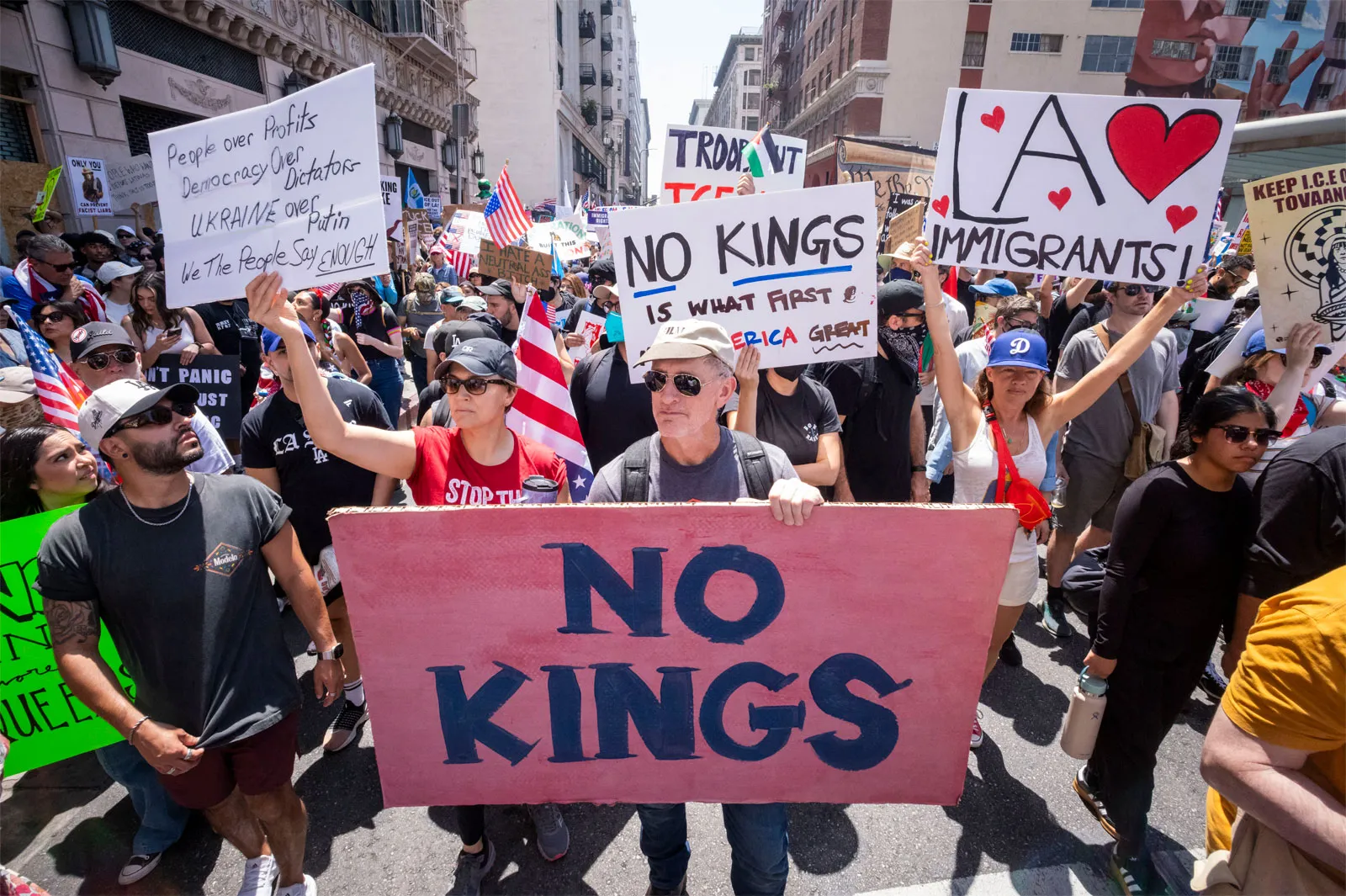
Roots of the Movement
The No Kings movement was born out of growing public anger over what critics saw as an increasingly authoritarian tone in Donald Trump’s second term.
The defining moment came on June 14, 2025, when the president held a massive military parade in Washington to mark both his birthday and the 250th anniversary of the U.S. Army. Trump wanted the day to celebrate what he called the greatness of leadership, but thousands in the streets turned it into a day of public dissent.
Millions of Americans joined coordinated demonstrations under the slogan No Kings, carrying signs that read “America is not a kingdom” and “No thrones in the White House.” The protests spread to more than two thousand cities, from New York to Seattle and from Dallas to Philadelphia, and were repeated again in October 2025.
Writer Michael Shank predicted that the peaceful movement would continue to grow, noting that it reflects a wider global wave of civic mobilization that includes protests against corruption in the Philippines and Nepal, as he wrote in Newsweek on October 28, 2025.
He also linked it to demonstrations in the United Kingdom against the genocide in Gaza and uprisings against authoritarian rule in Mozambique, Argentina, Indonesia, and Morocco, framing the movement as part of a global pushback against growing state power and the erosion of democracy.
The following day, October 29, Donald Trump Jr. clashed verbally with protesters chanting No Kings during a business summit in Riyadh. Speaking at the Future Investment Initiative launched by Saudi Crown Prince Mohammed bin Salman, Trump Jr. dismissed the movement as neither organic nor grassroots, claiming it was manufactured and funded by the usual global puppets. “If my father was a king, he probably wouldn't have allowed those protests to happen,” he said. “You saw the people that were actually protesting—it’s the same crazy liberals from the ‘60s and ’70s, they're just a lot older and fatter,” he added.
One of the defining traits of the No Kings movement is its decentralized, leaderless structure. It is not a party or a single organization but rather a networked coalition of local, civil, and labor groups united under one slogan.
The coalition includes organizations such as the 50501 Movement, which coined the campaign’s name to symbolize fifty states, fifty protests, and one movement, alongside advocacy groups like the ACLU and major teachers’ and public sector unions.
This decentralized model allowed the movement to grow rapidly, though it also presented the challenge of having no central figure to represent it in political debates or institutions.
Despite this, it has maintained a strong sense of unity through consistent messaging, shared symbols and colors, and disciplined commitment to nonviolence. According to ACLU data, organizing committees have created online crash courses to train volunteers in nonviolent resistance techniques and in documenting abuses during demonstrations.
Republican Response
The Republican reaction to the protests came quickly, though in a way that reflected Donald Trump’s trademark style. On October 20, 2025, the president posted a mocking video on his platform, Truth Social, created with artificial intelligence, showing him bombarding protesters with “balls of feces” as canned laughter played in the background.
The video was later deleted after widespread backlash from Democrats and human rights groups, with observers calling it an unprecedented escalation in the president’s use of digital tools to ridicule his critics. The Washington Post said the clip revealed a deliberate contempt for popular movements, while The Atlantic described it as a sign of Trump’s growing reliance on digital attacks instead of traditional political messaging.
Trump did not stop there. In later remarks, he said those chanting No Kings don’t understand that “I’m the best president in the history of the republic. I’m not a king, I’m the savior of democracy from collapse.” His statement sparked a wave of mockery across U.S. media.
Activist Jonathan Ruiz, one of the movement’s organizers, told CNN that the president’s behavior proves the movement’s point. A leader who mocks his own people with humiliating videos does not believe in the democracy he claims to protect.
The broader Republican response was tense and combative. House Speaker Mike Johnson called the demonstrations an anti-America gathering and controversially suggested links between the movement and Hamas, a claim Democrats condemned as an attempt to smear a peaceful domestic protest.
Right-wing outlets such as Fox News and Breitbart labeled the movement a leftist front funded by big tech companies and international organizations. In response, movement organizers dismissed those accusations as an effort to demonize democratic opposition, insisting that their funding comes entirely from small individual donations made online.
A Social Phenomenon
In the United States, the lifespan of social movements often depends on their ability to capture public imagination, and the No Kings movement has proven remarkably resilient in that regard. Rather than advancing narrow partisan or economic demands, it rallied around a unifying constitutional principle that rejects any form of political coronation.
Researchers at Georgetown University noted that the movement’s strength lies in its clear and emotionally charged narrative, which transcends ideological divides. Even in conservative states such as Oklahoma and Tennessee, small demonstrations embraced the No Kings slogan, a rare sight since the civil rights protests of the 1960s.
Social media also played a decisive role in transforming the movement from a local protest into a national phenomenon. Within 48 hours of the June demonstrations, the hashtag NoKingsUSA trended across 30 states on X and gained more than 200 million views on TikTok and Instagram in just one week.
The rise of No Kings coincided with repeated statements from Donald Trump suggesting he might seek a third term, something explicitly prohibited by the 22nd Amendment, which limits presidents to two terms.
In a September 2025 interview with Newsmax, Trump suggested that some people believed he deserved a third term because, in his view, the first one had been stolen from him.
Later, at a rally in Arizona, he said that the people would decide whether they wanted him for another term, a remark that sparked widespread concern about possible challenges to constitutional limits.
These comments became the rhetorical fuel for No Kings. For organizers, a president hinting at a third term embodied exactly what they were warning against, the slow transformation of a republic into a disguised monarchy.
During the October protests, many placards read “No Third Term, No King Donald” and “From Washington to Trump, No One Is Above the Constitution.”
In an editorial, The New York Times described the moment as the most dangerous constitutional crisis since Watergate, adding that the growing movement reflects an effort by American society to defend the principle of peaceful power transfer from collapse.
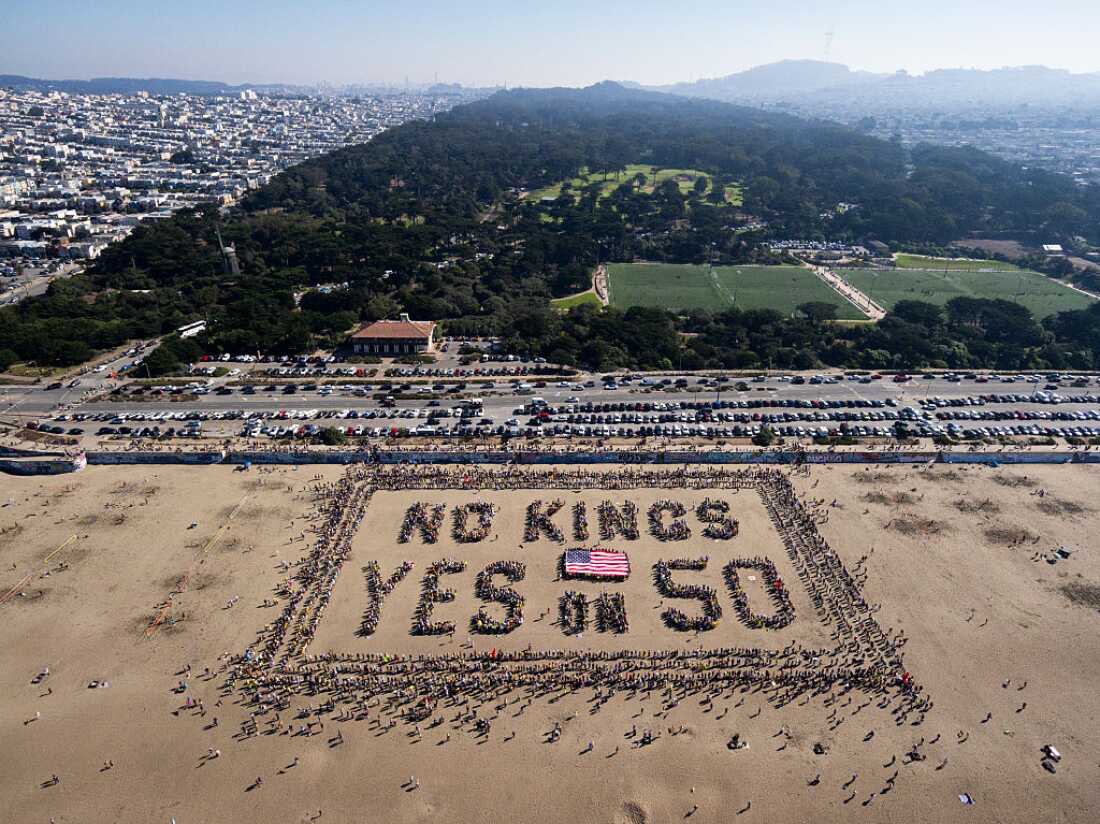
Does It Have an Impact?
So far, there is no indication that the No Kings movement has turned into a political party or an electoral organization, but it has already made a strong mark on the national conversation.
A poll by The Economist after the June protests found that 44 percent of Americans supported or sympathized with the movement’s goals, compared with 40 percent who opposed it, while 56 percent viewed it as mostly peaceful.
A separate study by the Pew Research Center showed that more than 60 percent of Americans under the age of 30 recognized the movement’s name, and about a quarter of them had participated in its events either in person or online.
Despite this momentum, the movement still faces a key challenge: turning public mobilization into real political influence.
While it has been successful in drawing large crowds, it has yet to build a clear mechanism for lasting impact in Congress or local elections.
Researchers at Harvard University noted that sustainability requires an institutional foundation rather than symbolic activism, pointing out that the movement’s next big test will be shifting from resistance to offering an alternative.
The Ash Center for Democratic Governance and Innovation at Harvard described No Kings as one of the most widespread and enduring peaceful movements in modern U.S. history.
In an October 16, 2025 report, the center said that the 2025 protests were not only massive but also more geographically diverse than ever before, reaching counties and states once considered solid Trump strongholds.
The center viewed this as a significant political shift that reflects growing public frustration with the expanding authoritarian tendencies in the White House.
David Green, a political sociology researcher at Princeton University, said that what sets No Kings apart from previous movements is its ability to combine constitutional awareness with popular protest.
While movements like Black Lives Matter focused on racial justice and Occupy Wall Street on economic inequality, No Kings presents a broader message about the very structure of the American system, warning that the threat this time is not a single issue but the erosion of the social contract itself.
For that reason, the movement has gained support from artists, academics, and religious figures who see its message as capturing the original spirit of the American idea.
Sources
- Millions turned out for anti-Trump 'No Kings' protests across US
- Donald Trump Jr. mocks 'No Kings' protests, praises father's approach to Mideast
- 'No Kings' protests draw large crowds in US cities to decry Trump
- About No Kings
- ‘No Kings’ Organizers Predict Peaceful Gathering of Millions Amid Fears of Law Enforcement Crackdown
- The Resistance Reaches into Trump Country
- Johnson describes planned No Kings rally as ‘hate America,’ ‘pro-Hamas’ gathering
- U.S. Protesters Increasingly Reject Political Violence, ‘No Kings’ Survey Finds
- U.S. Academic: How the “No Kings” Movement Can Turn Anger into Lasting Change [Arabic]
- No Kings means no kings. No wonder Trump hates it









